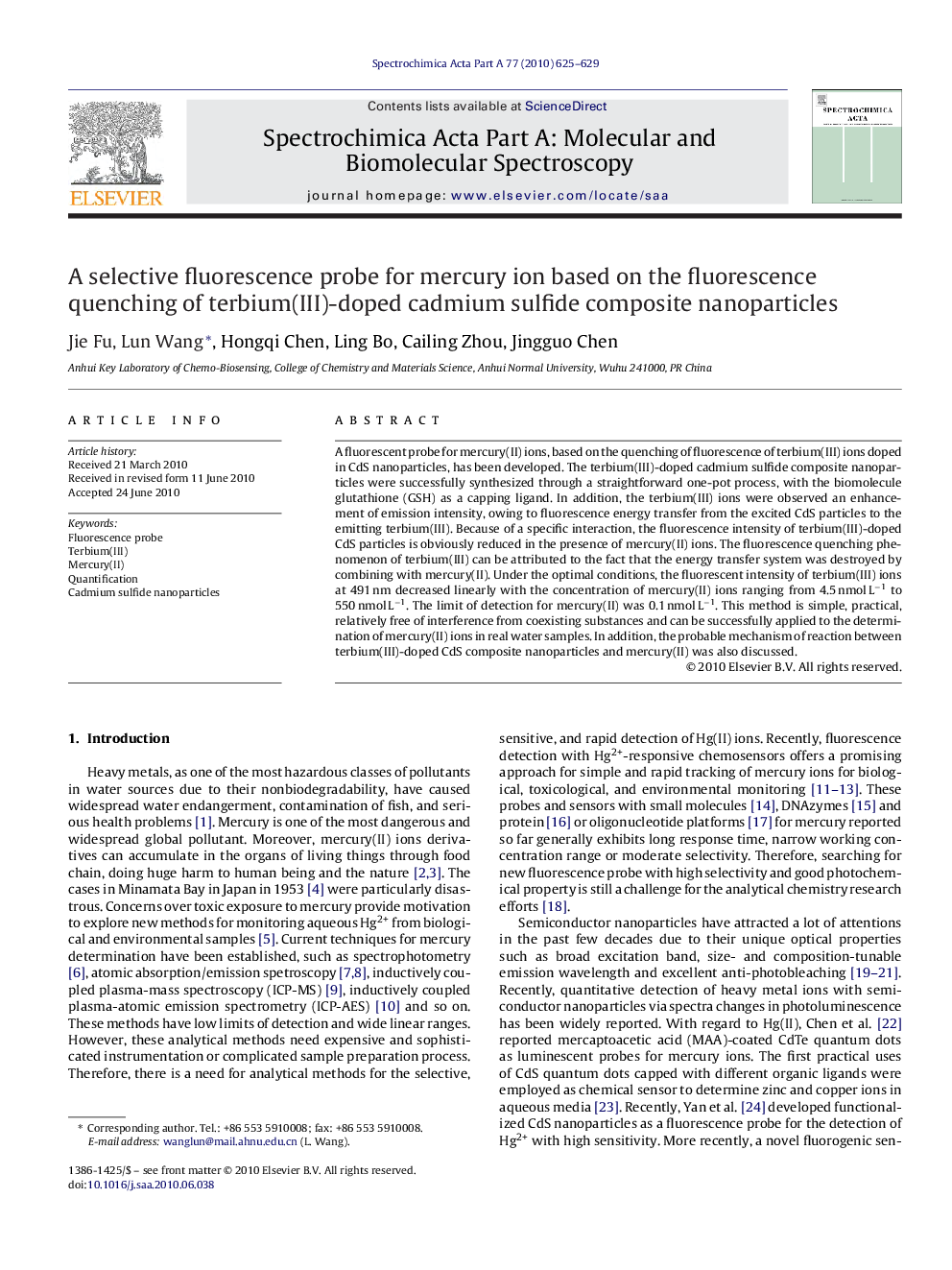| Article ID | Journal | Published Year | Pages | File Type |
|---|---|---|---|---|
| 1236761 | Spectrochimica Acta Part A: Molecular and Biomolecular Spectroscopy | 2010 | 5 Pages |
A fluorescent probe for mercury(II) ions, based on the quenching of fluorescence of terbium(III) ions doped in CdS nanoparticles, has been developed. The terbium(III)-doped cadmium sulfide composite nanoparticles were successfully synthesized through a straightforward one-pot process, with the biomolecule glutathione (GSH) as a capping ligand. In addition, the terbium(III) ions were observed an enhancement of emission intensity, owing to fluorescence energy transfer from the excited CdS particles to the emitting terbium(III). Because of a specific interaction, the fluorescence intensity of terbium(III)-doped CdS particles is obviously reduced in the presence of mercury(II) ions. The fluorescence quenching phenomenon of terbium(III) can be attributed to the fact that the energy transfer system was destroyed by combining with mercury(II). Under the optimal conditions, the fluorescent intensity of terbium(III) ions at 491 nm decreased linearly with the concentration of mercury(II) ions ranging from 4.5 nmol L−1 to 550 nmol L−1. The limit of detection for mercury(II) was 0.1 nmol L−1. This method is simple, practical, relatively free of interference from coexisting substances and can be successfully applied to the determination of mercury(II) ions in real water samples. In addition, the probable mechanism of reaction between terbium(III)-doped CdS composite nanoparticles and mercury(II) was also discussed.
